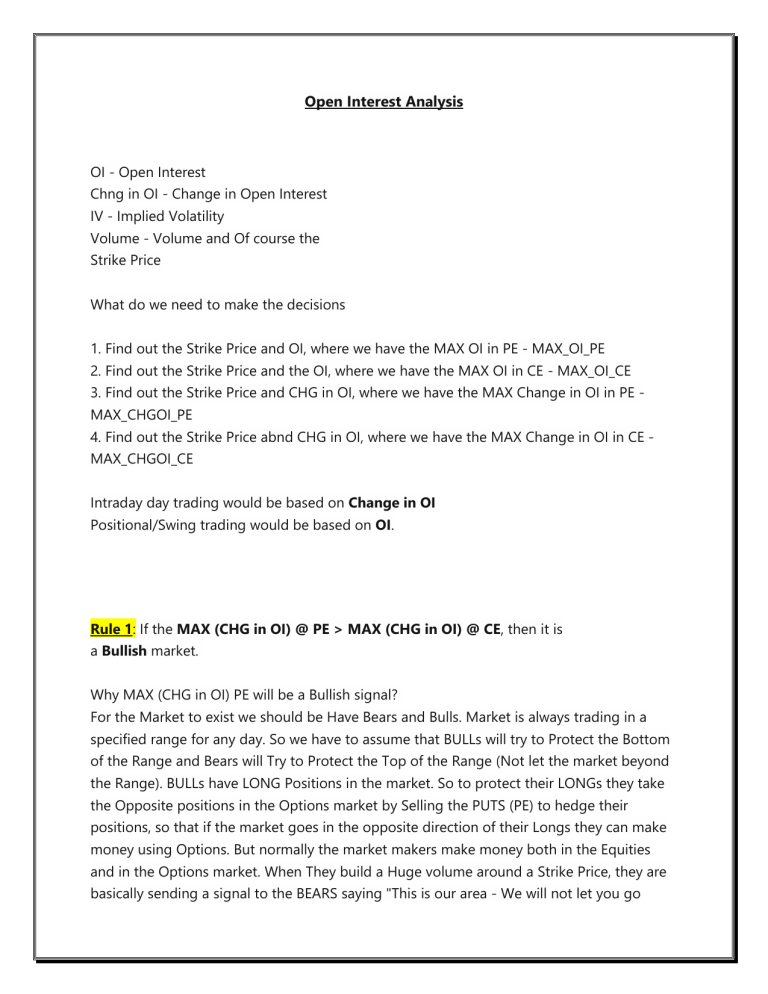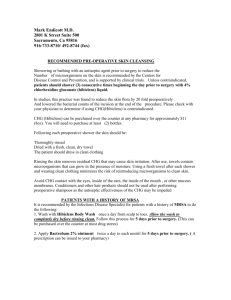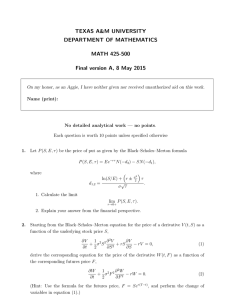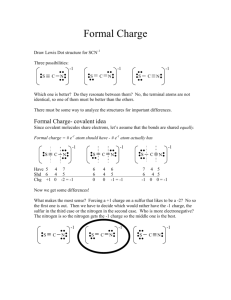
Open Interest Analysis OI - Open Interest Chng in OI - Change in Open Interest IV - Implied Volatility Volume - Volume and Of course the Strike Price What do we need to make the decisions 1. Find out the Strike Price and OI, where we have the MAX OI in PE - MAX_OI_PE 2. Find out the Strike Price and the OI, where we have the MAX OI in CE - MAX_OI_CE 3. Find out the Strike Price and CHG in OI, where we have the MAX Change in OI in PE MAX_CHGOI_PE 4. Find out the Strike Price abnd CHG in OI, where we have the MAX Change in OI in CE MAX_CHGOI_CE Intraday day trading would be based on Change in OI Positional/Swing trading would be based on OI. Rule 1: If the MAX (CHG in OI) @ PE > MAX (CHG in OI) @ CE, then it is a Bullish market. Why MAX (CHG in OI) PE will be a Bullish signal? For the Market to exist we should be Have Bears and Bulls. Market is always trading in a specified range for any day. So we have to assume that BULLs will try to Protect the Bottom of the Range and Bears will Try to Protect the Top of the Range (Not let the market beyond the Range). BULLs have LONG Positions in the market. So to protect their LONGs they take the Opposite positions in the Options market by Selling the PUTS (PE) to hedge their positions, so that if the market goes in the opposite direction of their Longs they can make money using Options. But normally the market makers make money both in the Equities and in the Options market. When They build a Huge volume around a Strike Price, they are basically sending a signal to the BEARS saying "This is our area - We will not let you go below this level". So BULLs normally control a Lower Strike and BEARS normally control a Upper Strike. For a given day this Range would act as the Intraday Range. Rule 2: If the MAX (CHG in OI) @ PE < MAX (CHG in OI) @ CE, then it is a BEARish market. Same explanation as the Bullish market Rule 3 : For Postional/Swing Trading use the OI instead of the CHN in OI and the same rule as Rule 1 and Rule 2 will follow. Rule 4: Does Volume in the Options Chain data play any role in our decision making?. Yes. Use the Volume data to decide whether it is STRONG BULL or a STRONG BEAR. Let us say at 6100 we have the MAX CHG in OI @ CE - Say 6L Postions Let us say at 6000 we have the MAX CHG in OI @ PE - 11L Positions Now 11L > 6L and PE > CE, so it is a BULL. Now let us look the Volumes @ 6100CE and 6000PE Volume @ 6100CE - 5.5L Volume @ 6000PE - 17 Now compare the CHG in OI and Volume @ 6100CE. Volume (5.5L) < 6L - So it is not a Strong BULL. Had the Volume been greater than the "CHG in OI" then it would have been a STRONG BULL. And same logic for the STRONG BEAR also.... Another Observation : So go for Naked Long in CE/PE only when the Volume at the Strike Price > CHG in OI. What if the Volume does not indicate like above? Then most probably the market is Range bound. Rule 5: Can we always go with this logic on the MAX(OI) and MAX(CHG in OI)? NO. This might not work during the last week of Expiry when the Market makers are closing their positions. So during the last week of Expiry better to stay away from the market or Play the market using the Implied Volatility Rule 6: In the CHG in OI, what if we get Negative values? What signals does it give? If we get the Negative values in "CE", that means Market makers (BEARS) are squaring off the Call Positions (The SHORT Positions). So heavy squaring off in CE is a BULLISH signal and we have to expect a BREAKOUT if there is a sudden spike in the squaring volume. There is a panic situation. Normally this will happen all of a sudden in say 10-20 minutes and we have to exit the Shorts immediately and can GO LONG. It is the Vice versa if we get Huge Negative Values in "PE". If we get Negative Values both in PE and CE, then blindly SELL the OI pair Small negative values indicate the normal profit booking. Rule 7: OK. For Intraday trading, based on the "CHG in OI" I got the Bullish or Bearish signal. Can I go and BUY the Options? How do I decide whether to BUY/SELL the option?. Important and a Difficult question. Unless if it is a Strong BULL or a STRONG BEAR, the Safe strategy would be to SELL the pair so that it is less risky. I mean if we get the Range as 5800PE and 6000CE. Then Sell 5800PE and 6000CE. Rule 7B: No I don't want to do Pair Trading. I want to take more risk and do some naked Calls / Puts. How do I decide whether to BUY/SELL. Use the Implied Volatility. I normally take the top (most traded) 5 Strikes and calculate the Average PE and CE volatility. Also find out the Historic Volatility of the underlying Futures. Let us take NIFTY and say we have Historic Volatility HVOLT= 21.18% (Get it from the NSEindia.com - FOVOLT.csv) Average PE VOLT - 18.78%. Average CE VOLT - 19.4%. So the observations are PE VOLT < HVOLT - Low Volatile market CE VOLT < HVOLT- Low Volatile market Rule 8: Respect the Strike Price where the MAX Pain is situated The Strike where the MAX Pain is like the Centre of Gravity. So especially during the Expiry the market will try to move and will try to expire around the MAX Pain. So in the last week of expiry one should avoid any OTM call around the MAX Pain because the OTM calls around the MAX Pain will expire worthless. For Example in Jul13 Expiry the MAX Pain on 22-Jul-13 is at 6000. So any 6100, 6200,... Calls will expire at Zero value. Similarly for 5900PE, 5800Pe, etc,,,




